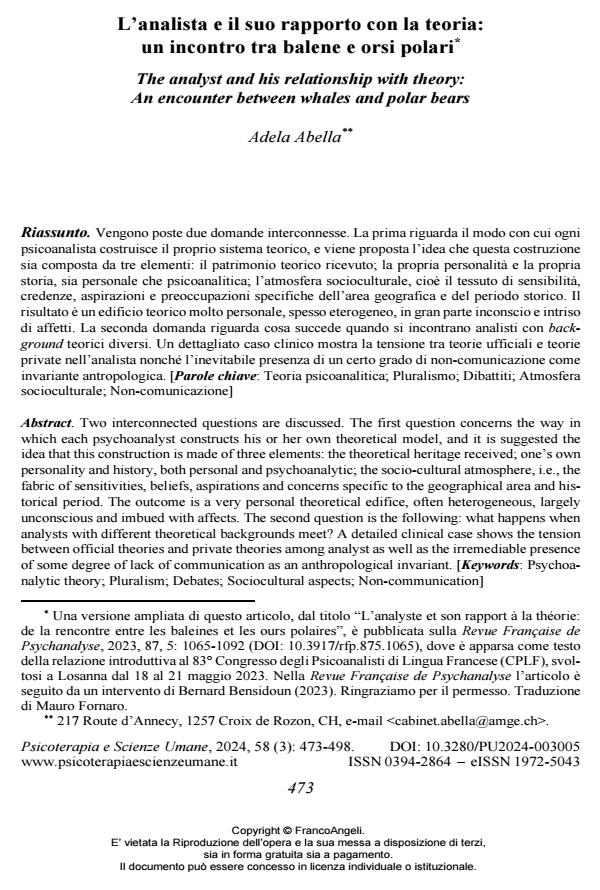The analyst and his relationship with theory: An encounter between whales and polar bears
Journal title PSICOTERAPIA E SCIENZE UMANE
Author/s Adela Abella
Publishing Year 2024 Issue 2024/3
Language Italian Pages 26 P. 473-498 File size 125 KB
DOI 10.3280/PU2024-003005
DOI is like a bar code for intellectual property: to have more infomation
click here
Below, you can see the article first page
If you want to buy this article in PDF format, you can do it, following the instructions to buy download credits

FrancoAngeli is member of Publishers International Linking Association, Inc (PILA), a not-for-profit association which run the CrossRef service enabling links to and from online scholarly content.
Two interconnected questions are discussed. The first question concerns the way in which each psychoanalyst constructs his or her own theoretical model, and it is suggested the idea that this construction is made of three elements: the theoretical heritage received; one’s own personality and history, both personal and psychoanalytic; the socio-cultural atmosphere, i.e., the fabric of sensitivities, beliefs, aspirations and concerns specific to the geographical area and historical peri-od. The outcome is a very personal theoretical edifice, often heterogeneous, largely unconscious and imbued with affects. The second question is the following: what happens when analysts with different theoretical backgrounds meet? A detailed clinical case shows the tension between official theories and private theories among analyst as well as the irremediable presence of some degree of lack of communication as an anthropological invariant.
Keywords: Psychoanalytic theory; Plu-ralism; Debates; Sociocultural aspects; Non-communication
Adela Abella, L’analista e il suo rapporto con la teoria: un incontro tra balene e orsi polari in "PSICOTERAPIA E SCIENZE UMANE" 3/2024, pp 473-498, DOI: 10.3280/PU2024-003005